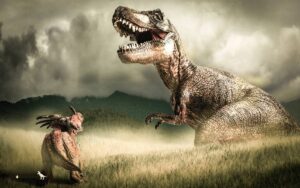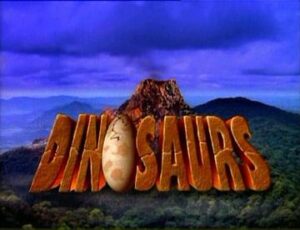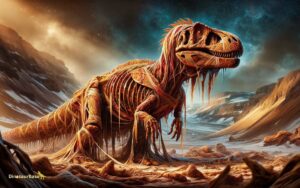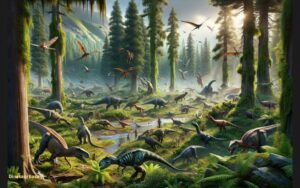3 Dinosaurs That Look Remarkably Like a Triceratops Unveiled
Three dinosaurs sharing Triceratops-like features include the Styracosaurus, Torosaurus, and Protoceratops. These ancient creatures possessed distinctive frills and horns.
Delving into the world of dinosaurs fascinates both the young and the young at heart, and identifying species similar to the well-known Triceratops offers a window into the rich diversity of the Cretaceous period.
The Styracosaurus, for instance, parades an elaborate frill and prominent spikes, while the Torosaurus boasts an even larger frill and extensive fenestrations.
Meanwhile, the smaller Protoceratops stands out with its curved frill and absence of prominent horns.
These remarkable creatures highlight the evolutionary variations within the ceratopsian family and capture our imagination with their unique adaptations.
Embracing the essence of these Prehistoric beasts takes us back millions of years, to a time when these incredible species roamed the Earth.
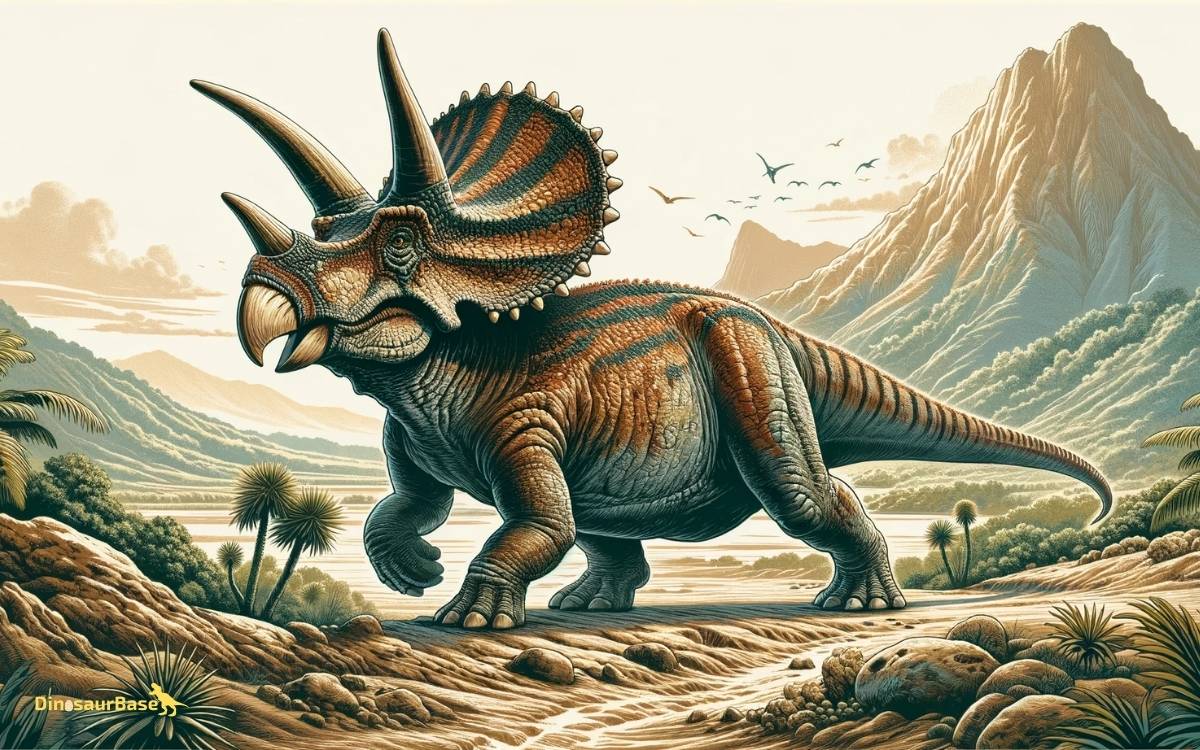
Introduction To Triceratops Cousins
Imagine walking through a prehistoric world where the might and majesty of dinosaurs never fail to amaze. Among them, the Triceratops stands out with its three-horned face and large frill.
But did you know that it was not alone in its appearance? In fact, there are other dinosaurs that shared its unique features.
They are often called the “cousins” of Triceratops. Let’s meet these remarkable creatures that mirror the extraordinary traits of the iconic Triceratops.
Familiar Features Of Ceratopsian Dinosaurs
- Large skull frills that served as a display and protection.
- Beaked mouths, resembling those of parrots, for cropping plants.
- Multiples horns on the nose and above the eyes.
The Significance Of Triceratops-like Discoveries
The unveiling of Triceratops-like dinosaurs is a thrilling development in paleontology. These findings enhance our understanding of dinosaur biodiversity.
They reveal how creatures adapted and thrived during prehistoric times. Each discovery adds a piece to the puzzle of our planet’s fascinating history, showing how the Triceratops was part of a diverse family of horned dinosaurs.
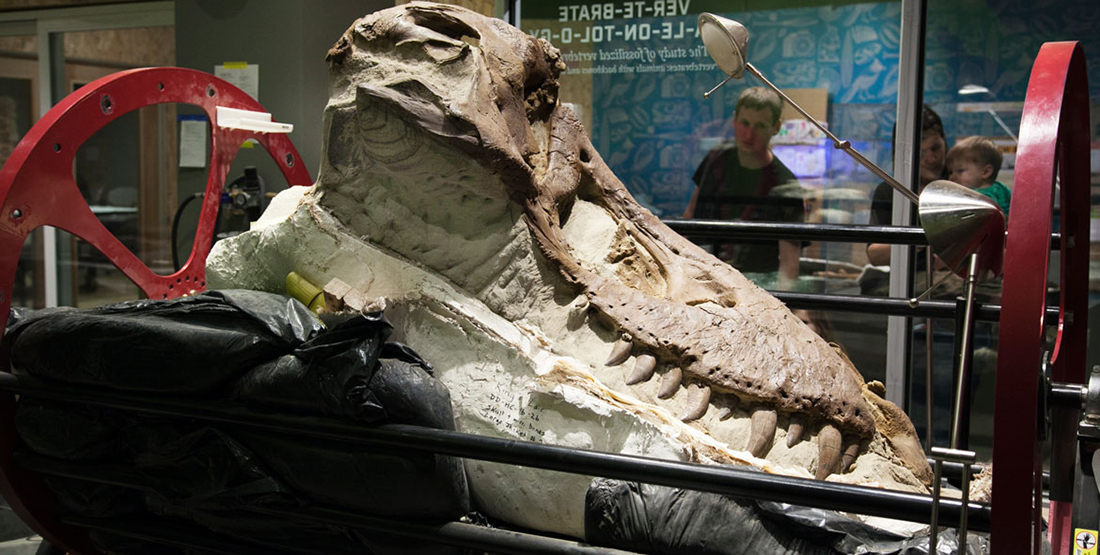
Credit: www.burkemuseum.org
Torosaurus: The Elder Sibling
Imagine a dinosaur with impressive horns and a massive frill. Torosaurus, often mistaken for its famous cousin, is one incredible dinosaur. It stands out as perhaps an older version of the Triceratops.
Let’s explore this fascinating creature and its intriguing connection to Triceratops, revealing why some call it the “Elder Sibling”.
Physical Characteristics And Habitat
Torosaurus was a sight to behold! It had a huge skull with two big horns above its eyes and a longer frill that dazzled scientists.
The frill, edged with bony projections, gave it a striking look. This dinosaur roamed in what is now North America, embracing warm climates and lush vegetation.
- Skull length: over 2.5 meters
- Horns: Two long ones above the eyes
- Frill: Extended with bony projections
- Habitat: Warm, lush areas of ancient North America
Debate Over The Triceratops-torosaurus Connection
Dinosaurs often lead to debates, and Torosaurus is no exception. This dino and the Triceratops may look similar, but are they actually the same species at different stages of life?
Some think Torosaurus is Triceratops grown old. Others disagree. The truth remains a mystery.
- Similarities: Horns and frills, size, and habitat
- Differences: Skull shape and frill size
- Debate: Are Torosaurus and Triceratops the same species at different ages?
Regaliceratops: A Royal Lookalike
The dinosaur kingdom holds many wonders and mysteries, and the “royal” family is no exception.
Among the fascinating members is Regaliceratops, a dinosaur that shares astonishing similarities with the famous Triceratops. This prehistoric creature exhibits a noble charm with its distinctive features.
Unraveling The ‘regal’ Crest
The Regaliceratops wielded a stunning crest atop its head, much like the majestic crown of royalty.
The crest, a hallmark of this species, served as more than just a regal ornament. Scientists believe it played a role in mate attraction and combat. The crest’s unique structure differentiates it from its Triceratops cousin.
- Squared-off edges: Unlike Triceratops, the Regaliceratops crest featured geometric angles.
- Elaborate ornamentation: Detailed patterns adorned its frill, much like royal tapestries.
- Prominent ‘helm’: A central spike stood out, giving an impression of a knightly helmet.
Discovering The Royal Kin
Regaliceratops was first introduced to science when a well-preserved skull was unearthed in Canada. This discovery shed light on the diversity of horned dinosaurs.
Often referred to as ‘Hellboy’ due to its distinctive features and the challenging excavation conditions, this dinosaur quickly became a paleontological sensation.
Key characteristics of Regaliceratops include:
| Feature | Description |
|---|---|
| Horns | Two long horns above the eyes, and a shorter nasal horn. |
| Size | Comparable to a modern rhinoceros. |
| Time Period | Lived during the Late Cretaceous period. |
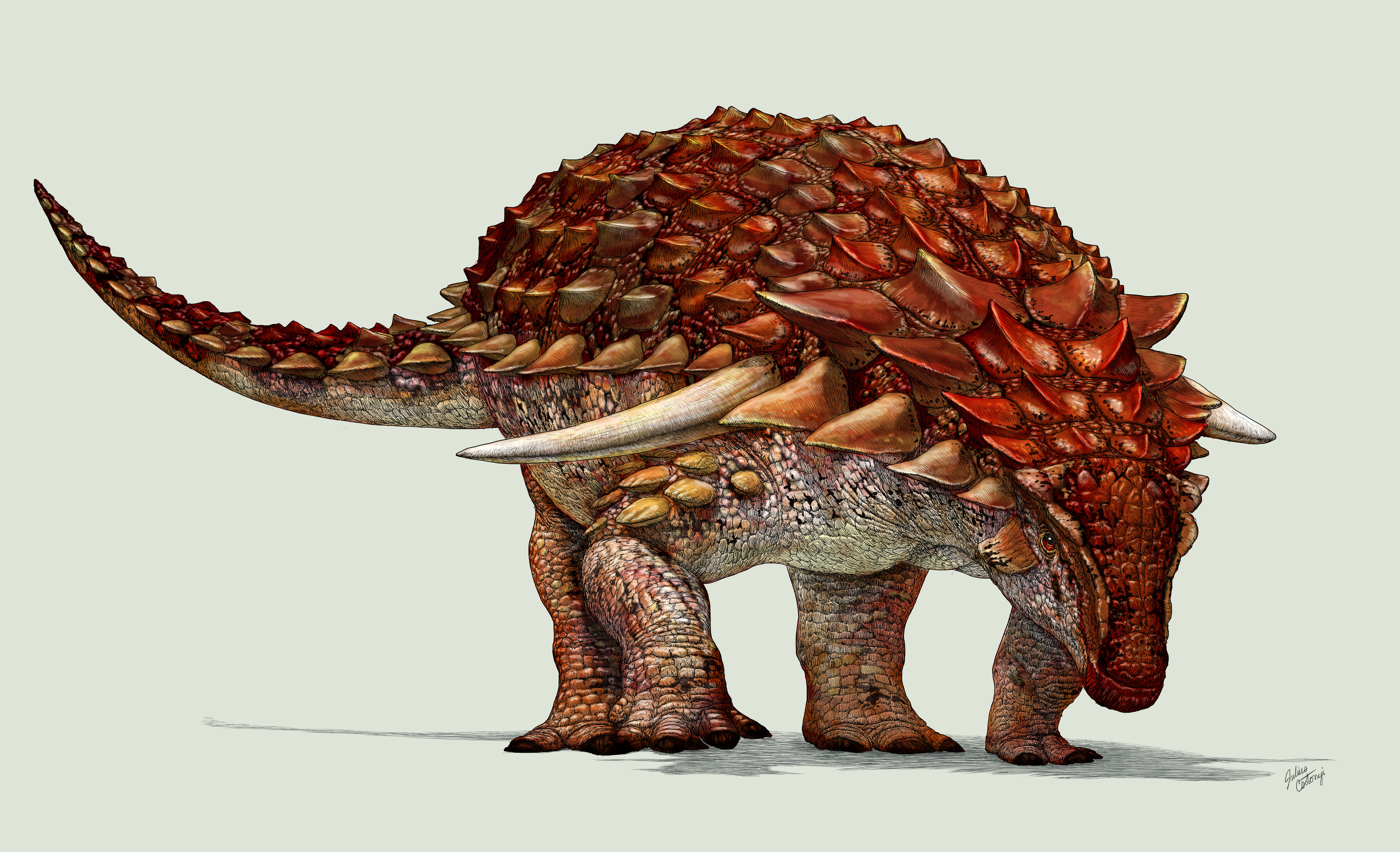
Credit: arstechnica.com
Nedoceratops: The Controversial Cousin
Nedoceratops stands out in the family of horned dinosaurs. It brings a twist to the Triceratops tale. Scientists argue about its place in dinosaur history. Let’s dive into the details of this perplexing prehistoric puzzle.
Distinguishing Features
This ancient beast once roamed Earth’s vast landscapes. Nedoceratops shared the stage with other well-known horned dinosaurs.
Like Triceratops, this dinosaur featured a large frill. It also had hefty horns above its eyes. Yet, it sports a peculiar nose horn. Some details about Nedoceratops include:
- A substantial skull frill, though less pronounced than Triceratops’
- Two prominent brow horns
- A unique, smaller, and stubbier nose horn
The Debate On Its Distinctive Status
The debate about Nedoceratops is heated. Some paleontologists see it as a separate species. Others think it’s just a Triceratops at a different life stage. The main points in this argument include:
| Separate Species | Triceratops Life Stage |
|---|---|
| Unique horns and frill shape | Changes with growth and age |
| Lack of other specimens | May represent a rare condition |
| Differences in skull structure | Possible individual variation |
Is Nedoceratops unique? Or is it just another face of Triceratops? Researchers continue to unravel this mystery. The answer may reshape our understanding of dinosaur diversity.
Evolutionary Significance Of Ceratopsids
The thunderous steps of the Triceratops still echo in the hushed halls of paleontology. Yet, this iconic dinosaur was not alone. Ceratopsids, the family that includes Triceratops, boast a rich lineage marked by diversity and wonder.
This diverse group reveals intricate patterns of dinosaur evolution, hinting at how biology and environment intertwine.
Let’s explore this remarkable family tree by examining three dinosaurs sharing a striking resemblance with the famed Triceratops.
Insights Into Dinosaur Evolution
Dinosaurs did not emerge fully formed. Their ascent depicts a grand evolutionary narrative. Ceratopsids are pivotal characters in this tale.
By studying their fossil record, scientists have gained valuable insights into their evolutionary transformations. Key features include:
- Skull size and shape variations among species
- Different horn and frill arrangements
- Varying dental adaptations reflecting diverse diets
These discoveries enable paleontologists to draw connections among species. They demonstrate evolutionary strategies that led to survival and diversification.
The Role Of Environmental Changes
Ceratopsids’ success cannot be detached from their ecological context. As the Earth underwent significant changes, these creatures adapted. Climates shifted, landscapes morphed, and competitors vied for dominance.
The ceratopsids’ story is a testament to evolutionary resilience. Here’s how the environment shaped them:
| Environmental Change | Ceratopsid Adaptation |
|---|---|
| Fluctuating climates | Thicker frills and horns for temperature regulation |
| Diverse flora | Complex teeth for grinding various plants |
| New predators | Robust shields and horns for protection |
Each adaptation not only highlights a reaction to change but also showcases nature’s powerful editing hand. Ceratopsids are prime examples of evolution in action.
Paleontological Discoveries And Techniques
Discovering dinosaurs gives us a glimpse back in time. Recent finds reveal cousins to the famous Triceratops. Scientists work tirelessly, digging deep into the earth’s layers. They bring prehistoric wonders back to life. Let’s dive into how modern techniques aid these exciting revelations.
Modern Methods In Fossil Excavation
Digging up dinosaur bones is no small task. Precision and care are crucial. Excavators use tools like brushes and dental picks. This ensures fossils don’t break.
- GPS and drones map dig sites from the sky.
- 3D imaging captures bones still buried.
- Ground-penetrating radar peeks underground without a shovel.
Tablets and computers help log finds instantly. Data gets shared around the world in seconds.
Advances In Reconstructing Prehistoric Life
Once fossils surface, the real magic begins. Piecing together dinosaur lives needs skill and tech. Experts blend biology with engineering for incredible results.
- CT scans unveil internal structures of fossils.
- Digital modeling recreates dinosaurs in 3D space.
- Scientists simulate muscles and movements on computers.
| Step | Method | Outcome |
|---|---|---|
| 1 | CT Scanning | Internal Details |
| 2 | 3D Modeling | Visual Form |
| 3 | Movement Simulation | Behavior Insights |
Adding colors and textures to models brings dinos to life. We can even test how Triceratops-like dinos moved.
Frequently Asked Questions For 3 Dinosaurs That Look Remarkably Like A Triceratops Unveiled
What Dinosaur Looks Similar To A Triceratops?
The Torosaurus closely resembles the Triceratops, featuring a large frill and three facial horns. Both dinosaurs belonged to the Ceratopsidae family.
What Dinosaur Is Related To The Triceratops?
The Torosaurus is closely related to the Triceratops. Both dinosaurs share similar features and belong to the Ceratopsidae family.
What Are The 3 Types Of Dinosaurs?
Three main types of dinosaurs are herbivores, carnivores, and omnivores. Herbivores, like Triceratops, ate plants. Carnivores, such as Tyrannosaurus Rex, fed on meat. Omnivores, including some dinosaurs, consumed both plants and meat.
How Many Ceratopsians Were There?
Over 30 ceratopsian species have been discovered. These dinosaur species are notable for their distinctive horns and frills.
Conclusion
Exploring the Cretaceous era, we’ve uncovered wonders resembling the iconic Triceratops. This journey into prehistory reveals our planet’s rich tapestry of life.
Remember Protoceratops, Torosaurus, and Styracosaurus; each carries a fragment of ancient Earth’s story. Dive deeper into paleontology’s pages for more awe-inspiring throwbacks to a bygone world.
Keep marveling at nature’s ancient artistry!

